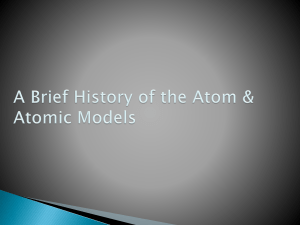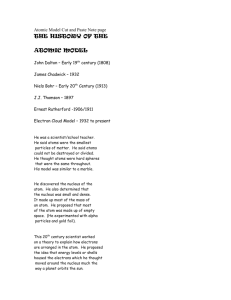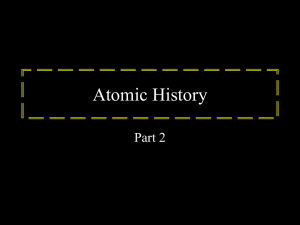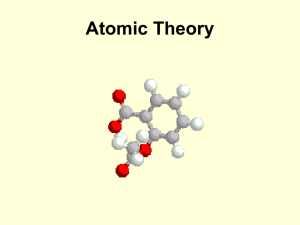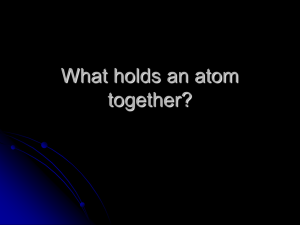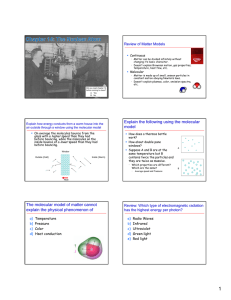science project 2
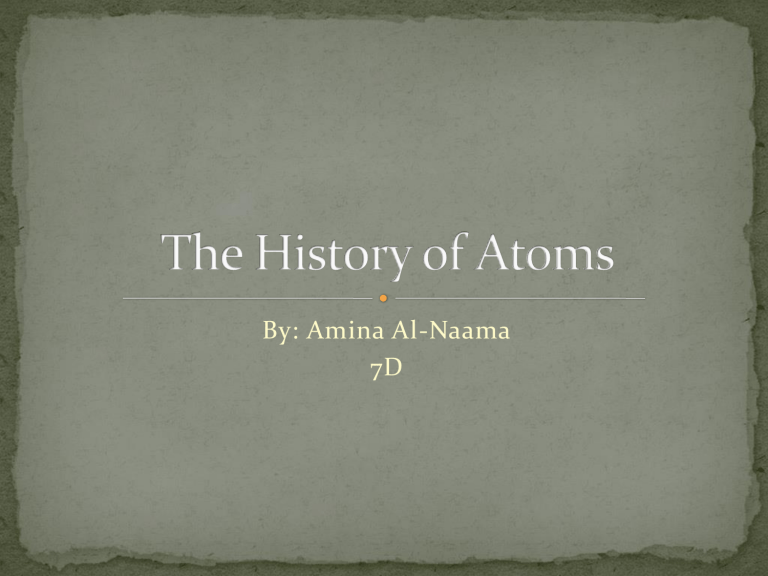
By: Amina Al-Naama
7D
An atom a fundamental piece of matter. Everything in the universe except energy is made of matter, and, so, everything in the universe is made of atoms. An atom itself is made up of three tiny kinds of particles called subatomic particles: protons, neutrons, and electrons.
In the year 400 B.C. A
Greek philosopher and the first one to suggest the atomic theory. He explained that all things are made up of tiny, invisible, indestructible particles of pure matter that are always moving around with out stopping.
John Dalton developed hypothesis that the sizes of the particles making up different gases must be different. His theory was that evaporated water exists in air as an independent gas. He thought about how water and air could occupy the same space at the same time, when solid bodies can't.
Joseph J. Thompson first discovered the electron.
He discovered the electron in a series of experiments designed to study the nature of electrical discharge in a high vacuum cathode ray tube. He is very famous for his “Plum Pudding
Model”.
Ernest Rutheford expanded on JJ Thomson's idea of the electron. He believed in JJ
Thompson’s theory about electrons and atoms.
However, Rutherford composed his own experiment. He fired positively charged particles called alpha particles at a thin sheet of gold foil.
Henry Moseley sorted the elements in the periodic table in a more logical way.
Neils Bohr came up with the "Planetary Model”.
The Bohr Model is familiar as the "planetary model". In the Bohr
Model the neutrons and protons are in nucleus, and the electrons orbit the nucleus a bit like planets orbiting the Sun.
James Chadwick first discovered the neutron.
Chadwick made an extremely important discovery in nuclear science. He discovered the particle in the nucleus of an atom that later became known as the neutron because it has no electric charge.
Erwin Schrodinger developed the mathematical theory that described the paths that electrons followed their nucleus.
